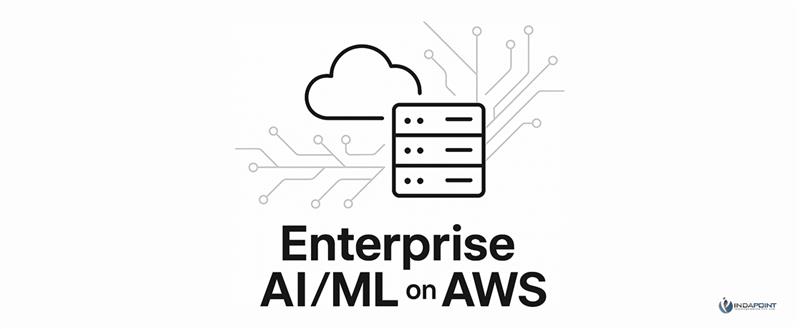Custom AI Solutions with Azure Machine Learning
As a trusted provider of Azure machine learning services for enterprises, IndaPoint leverages Azure for machine learning to deliver innovative, business-specific solutions that streamline operations and improve decision-making.
Build Tailored Machine Learning Models
We develop custom AI solutions with Azure Machine Learning to solve enterprise challenges. We ensure your models are aligned with tangible business outcomes and optimized for performance.
Automate Model Building with Azure AutoML
Leverage AutoML capabilities within Azure machine learning to automatically select the best algorithms and tune hyperparameters—boosting speed and accuracy in your development cycle.
Prepare and Manage High-Quality Data
Using Microsoft Azure Machine Learning, we handle data ingestion, transformation, and feature engineering to ensure clean, reliable inputs for practical model training.
Scalable Model Training and Optimization
Our team uses Azure's robust infrastructure to train ML models and fine-tune parameters—delivering reliable, production-ready outputs with minimal overhead.
Real-Time Deployment and Monitoring
Deploy your ML models as APIs and monitor them within Azure for machine learning to ensure real-time performance and business continuity.
MLOps for Continuous AI Delivery
We implement MLOps pipelines in Azure to manage the full ML lifecycle—enabling version control, continuous deployment, and collaborative development across teams.
Integrate with the Microsoft Azure Ecosystem
Our solutions seamlessly integrate with services like Azure Databricks, Azure Data Factory, and Power BI—enhancing the power and visibility of your AI systems.
Unlock the potential of your visionary project with our expert team. Contact us today and let's work together to bring your dream to life.
Embark on Your Visionary Project
Why Use Azure for Machine Learning Projects?
Azure machine learning offers a flexible, secure, and scalable environment for managing the complete machine learning lifecycle—ideal for enterprises adopting AI at scale.
Unified ML Lifecycle Management
Handle everything from data prep to deployment in one platform—boosting efficiency and consistency in your ML operations.
Scalable and Flexible Infrastructure
Microsoft Azure Machine Learning supports dynamic scaling for complex workloads and allows you to adjust compute resources as your needs evolve.
Enterprise-Grade Security and Compliance
Enjoy robust security features, including encryption, secure endpoints, and role-based access controls aligned with global compliance standards.
Compatible with Open-Source Frameworks
Work effortlessly with TensorFlow, PyTorch, and Scikit-learn inside the Azure machine learning environment, speeding up and making your AI development more efficient.
Accelerate Development with AutoML
Speed up your ML workflow using Azure AutoML to automate complex steps like feature selection, algorithm choice, and hyperparameter tuning.
Enable Robust MLOps Capabilities
Utilize MLOps within Microsoft Azure Machine Learning to automate deployments, monitor performance, and simplify updates and retraining.
Our Clients
500+ globally customers














Partner with IndaPoint for Azure Machine Learning Success
IndaPoint offers expert Azure machine-learning services tailored to your enterprise goals. Whether you're building forecasting tools, enhancing customer engagement, or streamlining operations, we deliver impactful, scalable AI solutions using the power of Microsoft Azure Machine Learning.
20+
Years Experience
50+
Talented Squad
1200+
Happy Clients
500+
Projects
Unlock the potential of your visionary project with our expert team. Contact us today and let's work together to bring your dream to life.
Embark on Your Visionary Project
Our Blogs: Feel the Beat of Innovation
Stay in sync with the latest in technology and business transformation.

Enterprises Deploying Generative AI at Scale: A Common Reference Architecture
Enterprises are adopting generative AI solutions at scale using a structured reference architecture comprising platform portals, automation, shared services, and governance. This architecture ensures scalability, security, and compliance across industries like finance, healthcare, retail, and manufacturing. It enables faster innovation, operational efficiency, and responsible AI deployment while addressing challenges like integration, data quality, and ethical use.
July 02,2025

AI Agents in Action: How Enterprises Can Operationalize Autonomous Intelligence Across Workflows
AI agents are transforming enterprise automation with agentic AI and multi-agent systems. From RAG chatbots to Claude agents and orchestration layers, they streamline enterprise AI workflows. Businesses can now build no-code AI tools, accelerating their business AI strategy. Operationalizing these tools empowers scalable, intelligent automation across finance, IT, and customer service—marking a new era in enterprise AI.
June 30,2025

AWS Services for AI/ML: The Definitive Enterprise Guide
Explore how AWS empowers enterprises with scalable AI/ML solutions. From data storage and model training to MLOps and edge AI, this guide covers the full spectrum of AWS services. Learn how leading companies streamline development, ensure compliance, and accelerate innovation with AWS’s powerful AI/ML ecosystem.
June 27,2025
Frequently Asked Questions
-
What Azure machine learning services does IndaPoint offer?
IndaPoint offers full-cycle Azure machine learning services for enterprises, including custom model development, AutoML integration, MLOps implementation, data preparation, and seamless deployment using Microsoft Azure Machine Learning.
-
How do you implement MLOps in Azure for machine learning projects?
We use Azure’s native tools to build CI/CD pipelines, automate deployments, and manage model versioning. Our MLOps practices ensure reliable, continuous delivery and monitoring across your Azure machine learning lifecycle.
-
How does Microsoft Azure Machine Learning ensure data security?
Microsoft Azure Machine Learning provides enterprise-grade security, including encrypted data storage, role-based access control (RBAC), and compliance with HIPAA, GDPR, and SOC standards—ensuring secure, scalable AI development.
-
What is Azure Machine Learning, and why is it important?
Azure machine learning is a cloud-based platform that helps businesses build, deploy, and manage machine learning models at scale. It simplifies the AI development process with tools like AutoML and MLOps and seamless integration with the Azure ecosystem.
-
Can IndaPoint deliver custom AI solutions with Azure Machine Learning?
Absolutely. We design and implement custom AI solutions with Azure Machine Learning tailored to your business needs—whether for predictive analytics, automation, or real-time decision-making.




